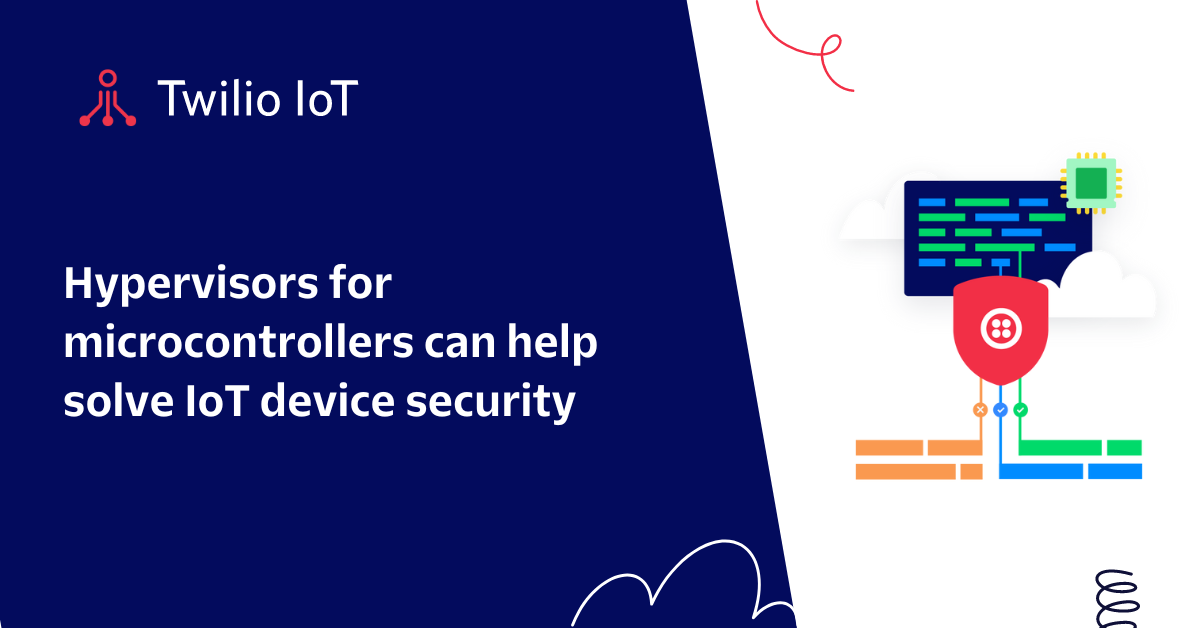Hypervisors for Microcontrollers can Help Solve IoT Device Security
Time to read:
This post is part of Twilio’s archive and may contain outdated information. We’re always building something new, so be sure to check out our latest posts for the most up-to-date insights.

The Internet of Things (IoT) has brought about many conveniences and benefits, but it has also introduced new security challenges. As more and more devices become connected to the internet, the potential for cyberattacks increases. This is particularly concerning when it comes to IoT devices, as many of them are small, low-power, and resource-constrained, making them difficult to secure.
The number of devices connected is a challenge for IoT security
One of the major challenges of IoT device security is the sheer number of devices that are being connected. With the growth of the IoT, there are now billions of devices that are connected to the internet, and many of them are vulnerable to attack. This creates a vast surface area for potential attacks, and makes it difficult for security teams to keep track of all the potential vulnerabilities.
Another challenge of IoT device security is the diversity of the devices themselves. IoT devices come in all shapes and sizes, and they are used in a wide range of different industries and applications. This makes it difficult to implement a one-size-fits-all approach to security, as different devices have different security needs and requirements.
What a hypervisor approach can do for IoT device security
One of the ways that companies are addressing the challenges of IoT device security is by exploring the use a hypervisor for microcontrollers. A hypervisor (also known as a virtual machine monitor, VMM, or virtualizer) is a type of computer software, firmware or hardware that creates and runs virtual machines. On hardware, this allows companies to create multiple isolated environments on a single device, which can help to prevent attacks from spreading from one environment to another.
Twilio is spearheading the architecture of hypervisors for microcontrollers – we call them microvisors. Twilio Microvisor is a small, lightweight solution that is specifically designed for resource-constrained devices. It leverages Arm TrustZone, which create multiple isolated environments on a single device, and it provides a high level of security, making it an ideal solution for IoT devices.
Conclusion
In conclusion, the challenges of IoT device security are significant, but they are not insurmountable. By using a hypervisor for microcontrollers, such as Twilio Microvisor, companies can ensure that their devices are as secure as possible, and protect against potential cyberattacks.
If you'd like to dive deeper into IoT device security and how to solve for it, please have a look at my article: Overcoming IoT security threats from the start.
If you'd like to explore Twilio Microvisor in more depth, please consider the following next steps:
- Read our whitepaper "Twilio Microvisor—Architecture and Design Considerations for Modern IoT Infrastructure"
- Sign up for our Beta Program and order a dev board
--
This article has been written with the help of generative AI
Related Posts
Related Resources
Twilio Docs
From APIs to SDKs to sample apps
API reference documentation, SDKs, helper libraries, quickstarts, and tutorials for your language and platform.
Resource Center
The latest ebooks, industry reports, and webinars
Learn from customer engagement experts to improve your own communication.
Ahoy
Twilio's developer community hub
Best practices, code samples, and inspiration to build communications and digital engagement experiences.

